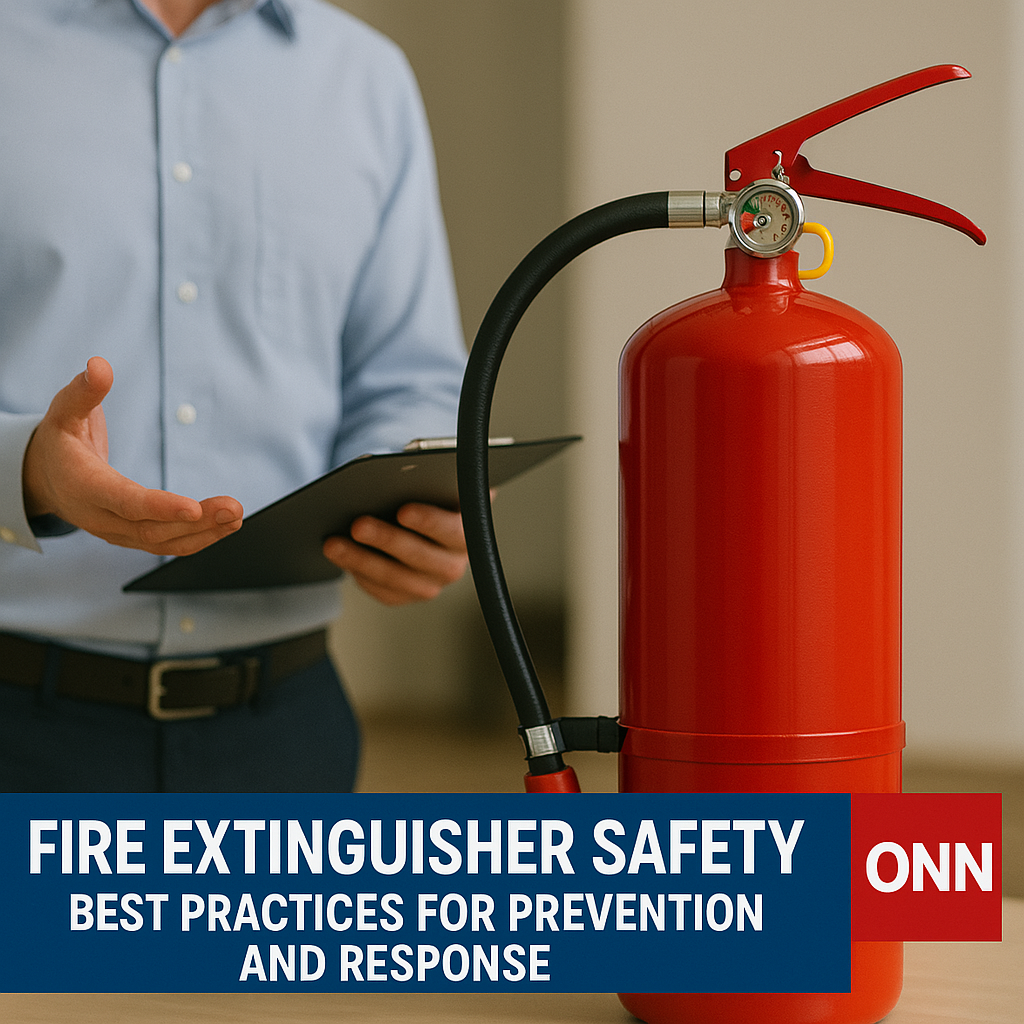In an emergency, every second matters. The quicker you act, the better your chances of safely containing or escaping a fire. Fire extinguishers play a crucial role in preventing small fires from becoming life-threatening, but knowing how to use them correctly is key.
Before grabbing a fire extinguisher, make sure the following conditions are met:
-
Ensure a clear exit route: Always know your escape route before attempting to extinguish the fire.
-
Evacuate the area: Confirm that everyone else is out of the building or area.
-
Call 911: Always contact emergency services first. Do not attempt to handle large or dangerous fires on your own.
Once you’re sure it’s safe to use a fire extinguisher, make sure you’re using the right type. Fire extinguishers are labeled for specific fire types:
-
Type A: For ordinary combustibles like wood, paper, and cloth. Never use Type A extinguishers on flammable liquids, as it could make the fire spread.
-
Type B: For flammable liquids such as gasoline, cooking oils, kerosene, and oil-based paints.
-
Type C: For electrical fires involving equipment like appliances, wiring, and fuse boxes.
-
Type ABC: A versatile extinguisher, often found in homes, suitable for most fire types including paper, liquids, and electrical.
How to Use a Fire Extinguisher: The PASS Method
When you’re ready to use the fire extinguisher, stand about three meters from the fire and follow these simple steps, known by the acronym PASS:
-
P – Pull the Pin: The pin locks the handle and prevents accidental discharge. Pull it to activate the extinguisher.
-
A – Aim Low: Point the nozzle at the base of the fire. Aiming at the flames will not effectively put it out.
-
S – Squeeze the Lever: This will release the extinguishing substance. Be aware that most small extinguishers run out quickly—usually in 10 to 25 seconds.
-
S – Sweep from Side to Side: Move the nozzle slowly from side to side, ensuring that the base of the fire is fully covered. If the fire goes out, continue monitoring. If it reignites, repeat the process. Even after putting out the fire, contact the fire department to inspect the area.
Fire Extinguisher Maintenance
Proper maintenance is critical for ensuring your fire extinguisher works when you need it most. Perform the following checks once a month:
-
Inspect for any visible damage.
-
Confirm that the pressure gauge is within the recommended range (refer to the manufacturer’s instructions).
-
If the extinguisher has been used, it must be professionally recharged before being used again.
Vaughan Fire and Rescue Service’s Commitment to Fire Safety
Vaughan Fire and Rescue Service (VFRS) is dedicated to educating the community on fire safety and proper fire extinguisher use. This year, VFRS was awarded a 2024 grant from the Firehouse Subs Public Safety Foundation of Canada. The grant, valued over $25,000, provided the VFRS with a Bullseye Digital Fire Extinguisher Training System and Dry Chemical Digital Laser Extinguisher.
These tools will help VFRS further educate the public on the correct use of fire extinguishers, ensuring residents are better prepared to handle emergencies safely and effectively.

